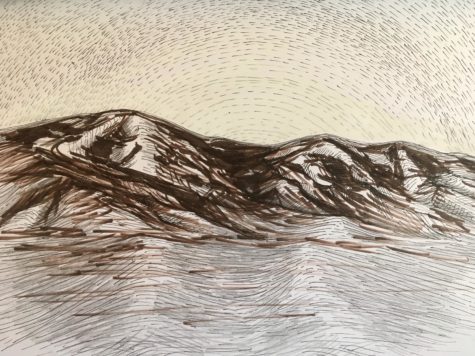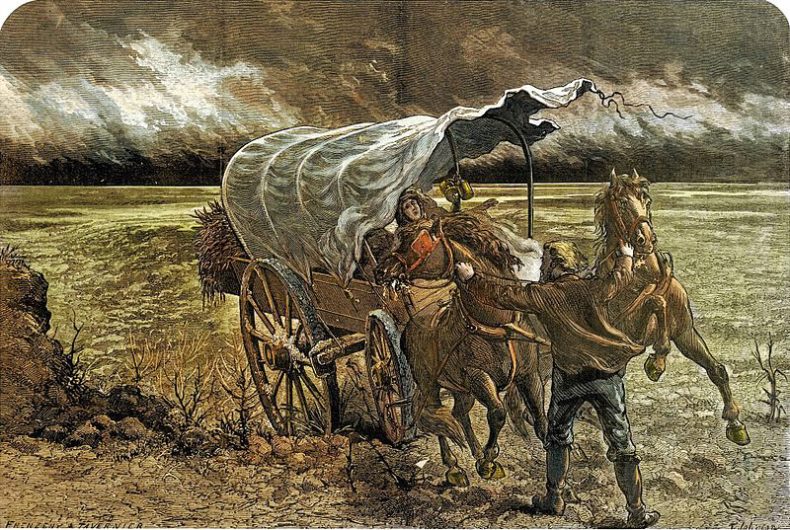Once upon a time there was a fossil seller and paleontologist named Mary Anning. In the early 19th century, she and her brother found the first complete ichthyosaur skeleton.
In the early 21st century, we immortalized her in marshmallow form.
Presenting Mary Anning, Paleontolopeep: A diorama by Joanna Church, Helen Fields and Kate Ramsayer.
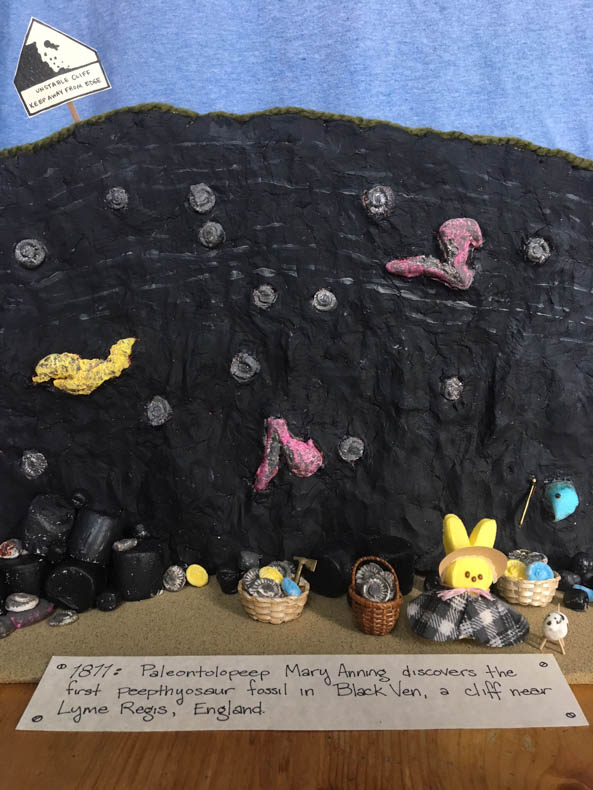 Mary lived in Lyme Regis, a coastal town in Southwest England along what is now known as the Jurassic Coast. The shale that makes up the nearby Black Ven cliff is rich with fossils including ammonites, belemnites, and ancient fish that once swam in the shallow seas. Mary and her dog, Tray, went out fossil-hunting at low tides and after storms – she became a well-respected paleontologist (paleontolopeep?) at a time when women weren’t admitted to the geology boys clubs. We won’t mention what happened to poor Tray.
Mary lived in Lyme Regis, a coastal town in Southwest England along what is now known as the Jurassic Coast. The shale that makes up the nearby Black Ven cliff is rich with fossils including ammonites, belemnites, and ancient fish that once swam in the shallow seas. Mary and her dog, Tray, went out fossil-hunting at low tides and after storms – she became a well-respected paleontologist (paleontolopeep?) at a time when women weren’t admitted to the geology boys clubs. We won’t mention what happened to poor Tray.
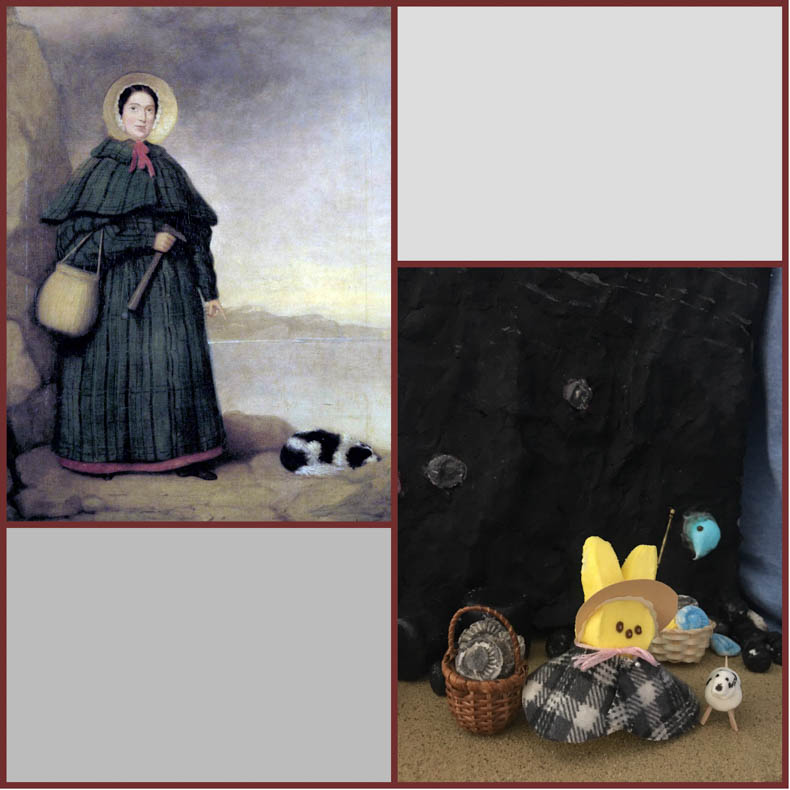
Look how much she looks like herself!
You may have heard the story that the tongue twister “She sells seashells by the seashore” was written about Mary Anning. One of the delightful nerds at the Library of Congress, folklorist Stephen Winick [I can call him a delightful nerd because (1) he is one and (2) I know him – Helen] has written a 6,000-word blog post about this assertion, and how there’s no evidence for it, and also what evidence is and how historians think, and will generally give you a sense of why folklorists are great. I recommend it.
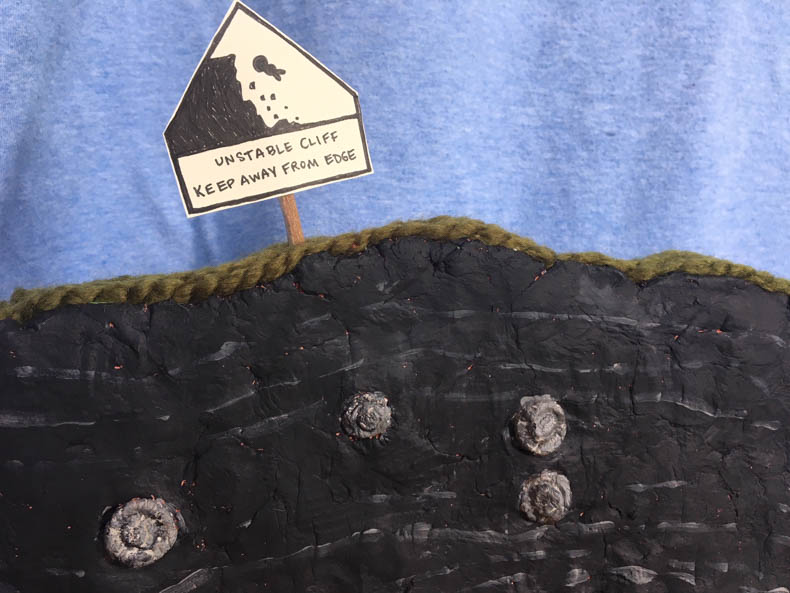
In modern days, the cliff tops along the Jurassic Coast have a lot of very alarming warning signs. We suspect this was not true in the early 19th century, but look how cute it is.
We happen to have knowledge about the warning signs on the Jurassic Coast because we went there ourselves in the spring of 2015. We hired a fossil guide, Chris Pamplin, for the morning, and he showed us around a beach a bit east of Lyme Regis, where we found ammonites, belemnites, and other fossils that Mary would have been very familiar with.
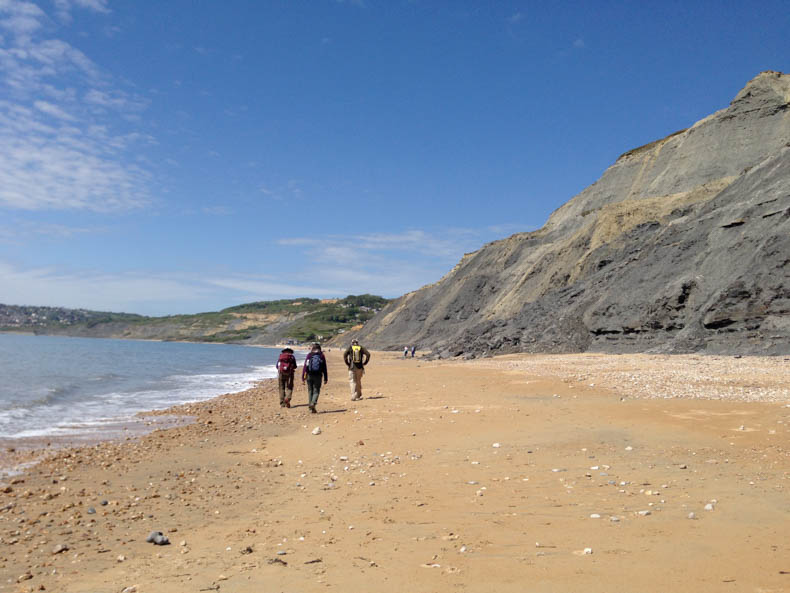 Look, it’s Helen, Joanna, and Liza Lester, the fourth member of our Jurassic Coast adventure team.
Look, it’s Helen, Joanna, and Liza Lester, the fourth member of our Jurassic Coast adventure team.
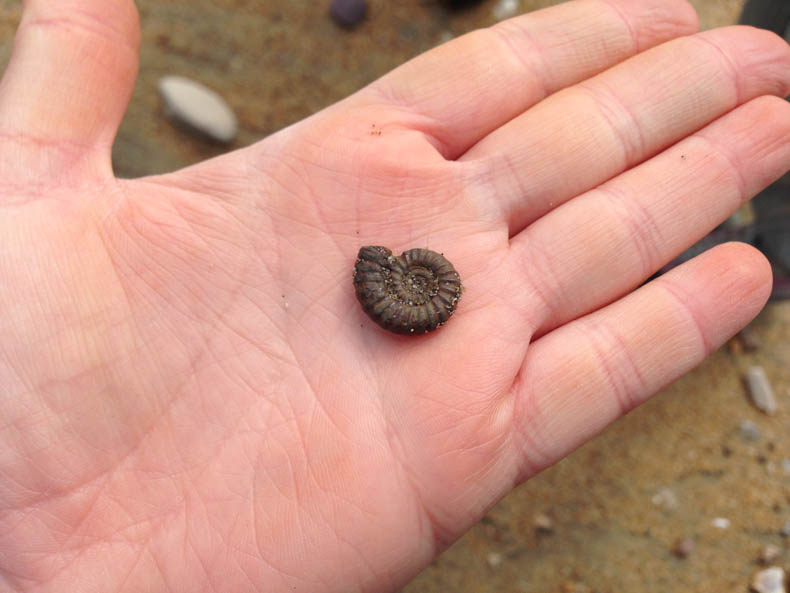
Kate holds an ammonite, which she likely found with a lot of help from Chris (he drew arrows in the sand). Once this was the shell of a nautilus-like creature that swam around Jurassic seas.
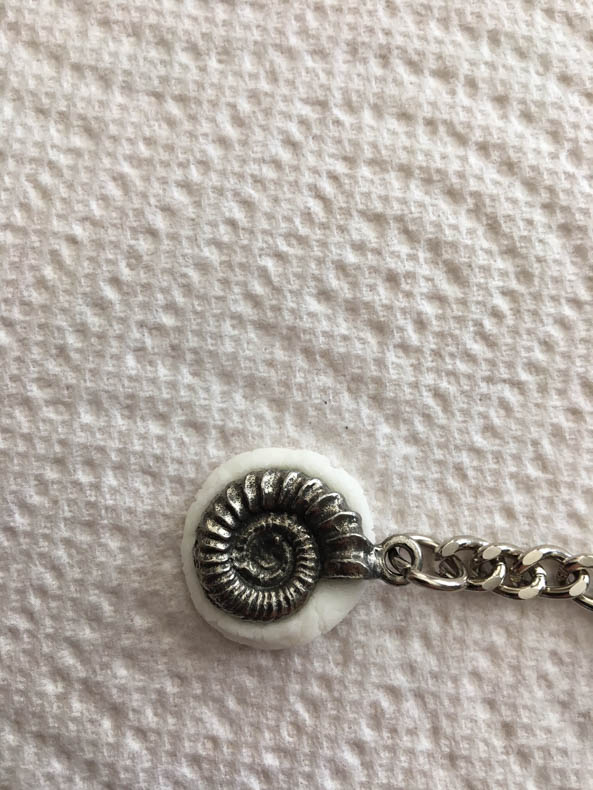
It turns out that this key chain, from a museum in another part of England that also has ammonites, is perfect for making impressions. Squish it onto a mini-marshmallow for a minute or so with your finger…
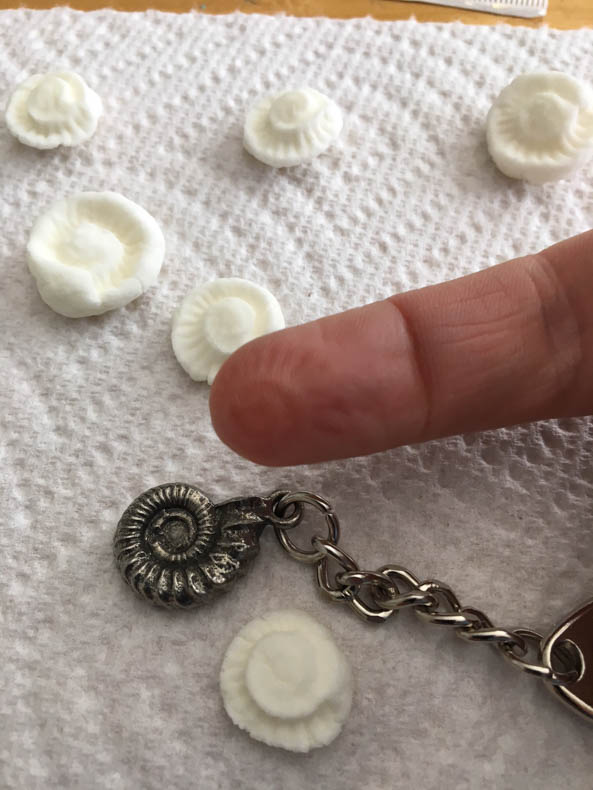
…and you get marshmallomnites. We were shocked at how well this worked. This method is also good for putting ammonite impressions into fingertips, which fortunately do not last as long as the marshmallow impressions.
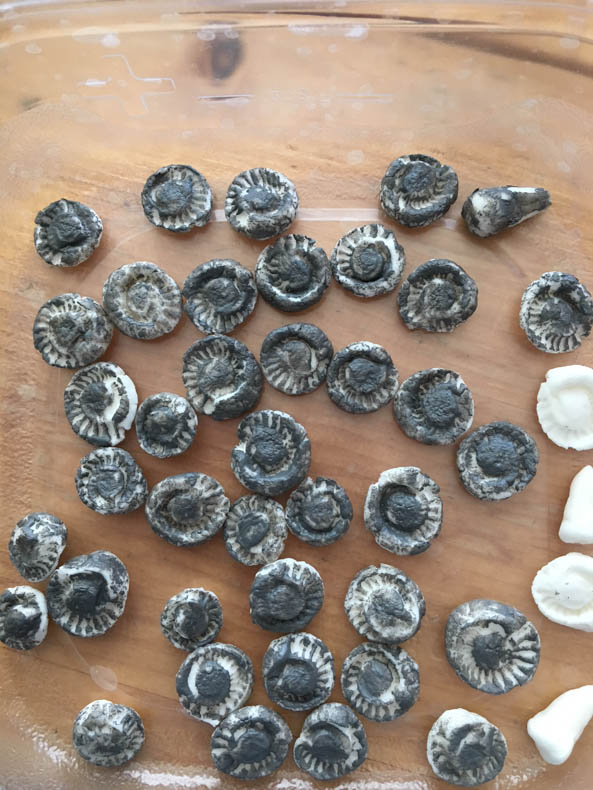
Did you know you can paint marshmallows? This is also handy for the Peeps themselves: Peeps are stuck together in the package, so when you pull them apart, there’s white marshmallow visible under their colorful sugar coating. Whip out the acrylic paints and cover up those scars.
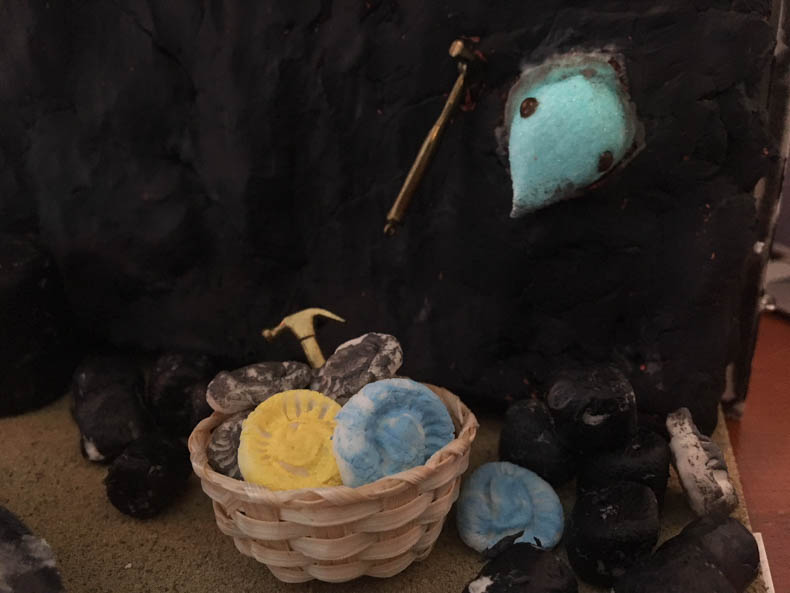
The Washington Post stopped holding their Peeps diorama contest last year ago. We still haven’t forgiven them. Last year we entered our Moby Peep diorama in a couple of other contests and won the St. Paul Pioneer Press’s contest. The Washington City Paper jumped in at the last minute last year to host the local competition and now seems to be making it an annual event, so we entered – but alas, did not make it into the finals. See the delightful winners on their website.
It’s possible the City Paper editors aren’t as into overlooked lady scientists of the 1800s as we are (their loss!). And, on that note, we were wondering… if we hosted a science-themed peep contest next year — and we’re not saying we’re going to, because it sounds like a lot of work — would you participate?
Photos: Kate Ramsayer; Portrait: Either an unknown artist or B.J.M. Donne, Natural History Museum in London, via Wikimedia commons.
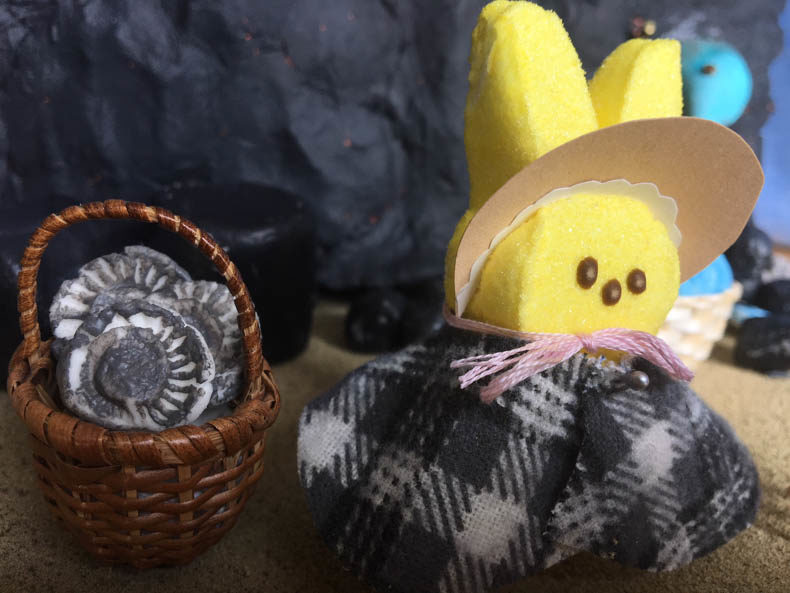


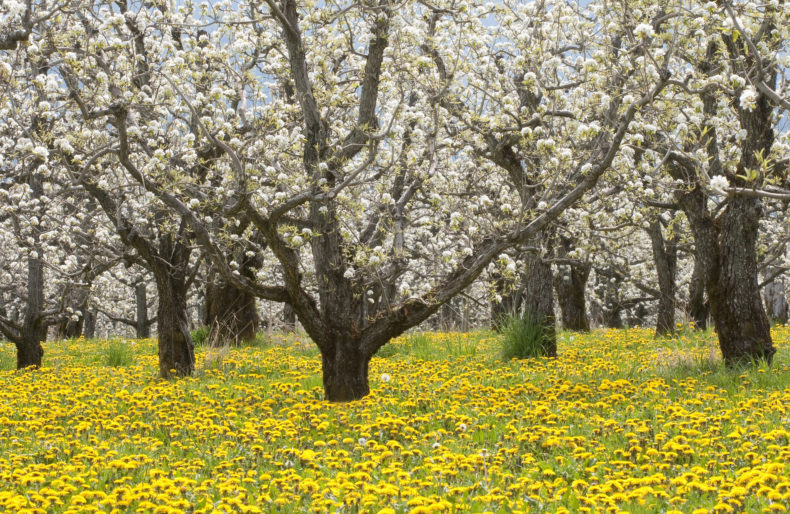
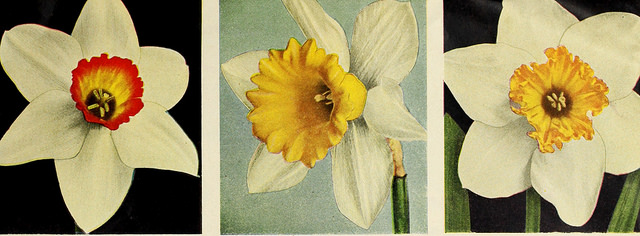
 Mary lived in Lyme Regis, a coastal town in Southwest England along what is now known as the Jurassic Coast. The shale that makes up the nearby Black Ven cliff is rich with fossils including ammonites, belemnites, and ancient fish that once swam in the shallow seas. Mary and her dog, Tray, went out fossil-hunting at low tides and after storms – she became a well-respected paleontologist (paleontolopeep?) at a time when women weren’t admitted to the geology boys clubs. We won’t mention what happened to poor Tray.
Mary lived in Lyme Regis, a coastal town in Southwest England along what is now known as the Jurassic Coast. The shale that makes up the nearby Black Ven cliff is rich with fossils including ammonites, belemnites, and ancient fish that once swam in the shallow seas. Mary and her dog, Tray, went out fossil-hunting at low tides and after storms – she became a well-respected paleontologist (paleontolopeep?) at a time when women weren’t admitted to the geology boys clubs. We won’t mention what happened to poor Tray.

 Look, it’s Helen, Joanna, and Liza Lester, the fourth member of our Jurassic Coast adventure team.
Look, it’s Helen, Joanna, and Liza Lester, the fourth member of our Jurassic Coast adventure team.




